System of Homeopathy by RAJAN SANKARAN [#SANSYS]
$85.00
Description
This book is deemed a “special order” item and because of this, it is non-returnable.
This book includes 35 detailed cases and numerous short cases through which the author describes his system of prescribing remedies. Besides writing about the various kingdoms of medicines, Sankaran also discussed various sub-kingdoms.
This book is the 4th in the series of books published by Dr Rajan Sankaran after the “Spirit of Homoeopathy” and “Substance of Homoeopathy” Wherein he explained his understanding of Homoeopathic principles and his approach to case taking and prescribing. This current book explains, in detail, his methods of case taking and analysis as evolved over the years in his practice.
A large number of case studies presented with actual interview records, detailed case analysis and basis of remedy selection make this book very absorbing. The follow-up seeks to demonstrate actual response. To appreciate his system we have to keep in mind, without prejudice, his concepts of disease and other approaches as explained by him. Briefly discussed in Chapter I they are: –
1. The disease is central disturbance which affects first the mental and general plane and then the organs. This is what has to be treated, if peripheral disturbances are to cease to exist.
2. The mental disposition, not merely mental symptoms, is more important; it is not discrete or separate but connected by a situation.
3. Disease are a posture adopted by the organism for which a particular posture was adopted no longer exists. Hence disease is a delusion ie a false perception of reality. The state of being of a person can stem from a situation or delusion. To remove the state one must remove the delusion.
4. In children there is a striking resemblance of the state of the infant and that of the mother during her pregnancy and sometimes of the father.
5. There are four stages of the disease:
a) The delusion or the main feeling.
b) Coping as the intensity increases.
c) Failed stage when the person is unable to cope though trying his best.
d) Given up stage, where the person makes no further effort to cope.
In (a) the feeling are uncompensated.
6. Awareness of the reality is cure anmd health is freedom.
7. Many of the symptoms of the patient may be in the compensated form (covering up by an act of will) and symptoms of the uncompensated state. Are essential to understand the state of the patient and prescribe. In dreams, the feelings expressed are raw and uncompensated; therefore they are often the key to understanding the patient and his delusion.
8.Each remedy is a state of being.
9.The delusion are also analysed in terms of the miasms. Apart from three basic miasms of Hahneman, Dr.Rajan had introduced in – between miasms like Typhoid, Sub-acute, Ringworm.Malaria, Cancer and Leprosy, with their corresponding remedies and nosodes. This approach enables better understanding of the case, while helping narrow the choice of the remedy.
After discussing the evolution of his system in the first chapter, he presents 25 case studies. Documentation of the whole interview, a detailed case analysis, the major points in the case including the central disturbance, delusion miasm, remedy kingdom, the reportorial rubrics and the final remedy selection with the follow-up, allowing proper assessment of remedy action leading to cure or relief, are presented in each case. These assorted and chronic cases (except one acute) facilitate understanding of his methods of case taking, value addition and final selection. Appropriate footnotes aid this process.
At the end of these 25 cases, the reader is fairly familiarized with the concepts. Then follows chapter 27 titled ” the system” -a packed 48 pages- in which he discusses in detail the concepts of case taking and case analysis. Thereafter 10 more cases are presented.
In his system there are four levels of case taking-
1st level- only the symptoms are gathered.
2nd level- important hints obtained at first level, are acted on, and the line of enquiry is established. Dreams are asked at the end of second level.
3rd Level-directed enquiry -going deep into these is sues and feelings, including PQRS.
4th Level – this epicentre of delusion or sensation changes the complexion of the case, as we can see through the eyes of the patient. Connections are unearthed or the common point of the deepest mental and physical sensations surface. At this point the miasm, kingdom of the remedy and other ideas, all converge to a sharp focus to facilitate remedy selection mind, especially his fears and dreams. These rubrics can be substituted for one another. Finally he asks confirmatory questions about the kingdom and the remedy.
Dr. Rajan then discusses, with brief case illustrations and cross-references to the earlier cases, each aspect of case taking. The paints he makes are:
1. The chief complaint, either alone or together with other complaints, may give an idea of the kingdom,miasm,stage of the disease and the delusion either in part or in whole.
2. The effect of the compalint on the patient is importani; eg one patient with severe pain and heaviness in the bdomen did not want to move. She could neither move out nor be with the plants and trees she loved. This feeling of being restricted, as if in prison, with a feeling of having done something wrong, led to selection of Cyclamen.
3. Pathology is nothing but an expression that coresponds to the delusion, but it serves to make the delusion real. Eg: a woman felt a tremendous performance pressure as she was severely restricted by her father. When he died, she developed eruptions on her fingertips, making it impossible to work as a dentist, point or sew. The delusion was kept alive even after the exit of the exciting factor.
4. The actuality versus perception by the patient is often startling different. Eg:in one case where Carcinosin was prescribed, the child found disorder arolund her and felt obliged to put some order into it, but felt handicapped because she was too small. Later when she helplessly warched her parents fighting and hitting each other. She developed autoimmune vasculitis with gangrene. Another patient experienced stress associated with appearing in public. Here it was not timidity; She was so tall and masculine that she felt others looked down upon her. The rubric-Delusion, diminished, short; delusion,looked down upon and disgust for self-led to prescription of Lac-can.]
5. Dreams reveal uncompensated feelings and are the most direct path to the patient’s delusion. Do not ignore dreams nor interpret them. Dr Rajan Discusses, with illustrations, this topic in great detail- what to look for in dreams actual and virtual dreams. Actual dreams are those which occur in sleep while virtual dreams include other forms of uncompensated behaviour in the waking state-eg fears, fantasies, sensations as if, metaphors, interests and hobbies, hopes,religion and philosophy, Each is illustrated.
To complete the understanding of the case one should identify, apart from mental state, the physical symptoms with details of the location, sensations, modalities and concomitants and past history. Dr Rajan says that when a patient is descibing his physical compalaints, he is talking about his mental state. The doctor should explore the vocation or profession of the patient- what he chooses to do and why; recreational activities, chosen out of free will, truely indicate the uncompensated person.
CASE ANALYSIS:
Pay close attention to the exact words of the patient. Reference to attachment to an animal or flower or nature or the type of professions choses may point to the remedy. Trace the connections between all aspects of the case and give due weightage. Page No.4 For miasmatic evaluation; correlate the words, attitude, mood, pace, pathology and past history.
KINGDOM EVALUATION:
a) A history given in a structured, organized way with details and lists points to a mineral remedy.
b) If done in an emotional and sentimental tones, then to a plant remedy
In some cases he refers to the provings of the remedies conducted by himself and his colleagues.
Next Turn To Materia Medica And Repertory Software:
To select as many rubrics which express the central idea. Then take a few rubrics, which mostly cover the symptoms of the case by elimination, identify common remedies. Then consult source Materia medica books and provings to select the remedy.
All that the patient says must fit.
The final and the most important step are to answer the question- “Is there anything which does not fit?” The very fact that it does not fit may lead to the remedy closest to the core of the case. Dr. Rajan has included three cases of this type, where Theridion was chosen insted to tarentula and selenium for Staphysagrua and Elaps instead of Staphysagria.
If one or two very strong themes run parallel and are interconnected then think of a salt; this is justified when the qualities of two ions interact with each other throughout the case. Eg: a middle-aged woman suffered from lumbar disc herniation. Her problem started when her brother -in-law refused to look after his mother who was very sick and proposed that she should be left in the streets. She was very angry at that attitude. The themes of lack of care and caring for others (Phos) and concern for the family (Kalium) and the feeling that she was not getting support from her husband led to the selection of kali-phos.
AS REGARDS THE POTENCY:
1. The potency should match the intensity of the state of the patient.
2.here the mental and general symptoms predominate use high potency.
3. Where the pathology predominates, the disturbance has reached the peripheral stage and would need a low to moderate potency.
4. The presence of characteristic symptoms indicates good vitality and so calls for moderate to high potency.
5. Potencies also relate to the age of the patient: in a child with a lot of fears and no pathology – a high potency. -Children with congenital problems or with severs pathology-low potency.
In the case of old people where there are no fears, hardly any dreams but server pathology with suppression; a low potency is needed, as the vitality is low. The coped up state represents the positive side while failed state represents the negative side of the remedy; tjhe more the negative side is expressed at the conscious level the higher the potency. LM potencies are appropriate with severs pathology and for a frail patient and in chronic slowly progressive diseases.
The Criteria For Follow-Up Are-
The general enerfgy of the patient;
Mental and emotional state;
The status of the chief complaint;
Appearance of new symptoms or recurrence of old symptoms etc
GENERAL REMARKS ABOUT CASES:
1. In most of the cases the dreams the patient had, are explored to find the uncompensated state, even in the follow-ups. Either the patient does not get the same repetitive dreams or amelioration is reflected through new dreams. In some cases. He explains how dreams led to the remedy.
2. Two cases are presented where the mother’s state during pregnancy and father’s mental makeup determined the choice of the remedy.
3. Dr. Rajan had administered only one remedy in varying potencies and no acute remedy was prescribed. There is no mention of prescribing the constitutional remedy in contrast to the present day practice of delineating acutes, intercurrent-nosodes and constitutional.
4. Some cases illustrate the concepts of intermediate miasms introduced in his earlier book. (He has also elaborated on the miasmatic classification with a comprehensive chart in an appendix to this book).
5. The concepts of Dr Jan Scholten in arriving at the theme of the compound remedies-eg Calcarea nitricum case are employed. He has also used the provings of remedies he had made and recorded in his book ” The Soul of Remedies”.
6. Some of the cases ion which he arrived at the remedy such as Platinum. Coffea. Staphysagria and Strontium -carb are instructive. Eg arriving at Coffea is beautiful. There was constant activity of mind and the need to innovate and create. Tremendous sensitivity to pain; feeling that he is in dirty, filthy and closed places; sleeplessness. Sense of alienation. He cannot accept anything from others unless he has been giving. His son and his son’s wife surreptitiously gave hgis wige some mony which he direly needed but was reluctant top ask and this episode made him break down and weep. The feeling in this remedy is “I will get love and consideration only when I do for others”. Coupled with rubrics – activity creative, ailments from excessive joy, sleeplessness, activity of thoughts from ideas abundant etc led to the remedy.
7. Follow-up interviews aim at ascertaining whether the delusion has disappeared.
8. Dr. Rajan makes an important point regarding treatment of acute diseases while treating a chronic complaint. “The acute is actually a part of the chronic disease and not a new separate disease; it is usually a healing crisis and care should be taken not to disturb it During this acute exacerbation the disease state becomes more pronounced so that the characteristic and peculiar symptoms are thrown up and help find the correct remedy”.
Orders for this book require a “special order” which means that it is nonreturnable.

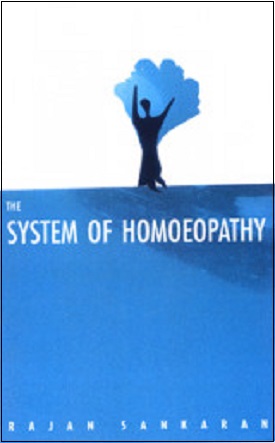
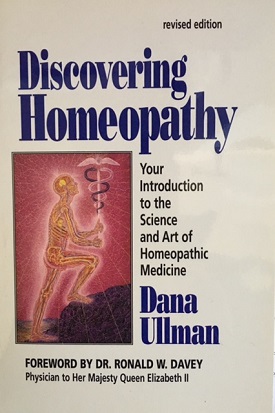
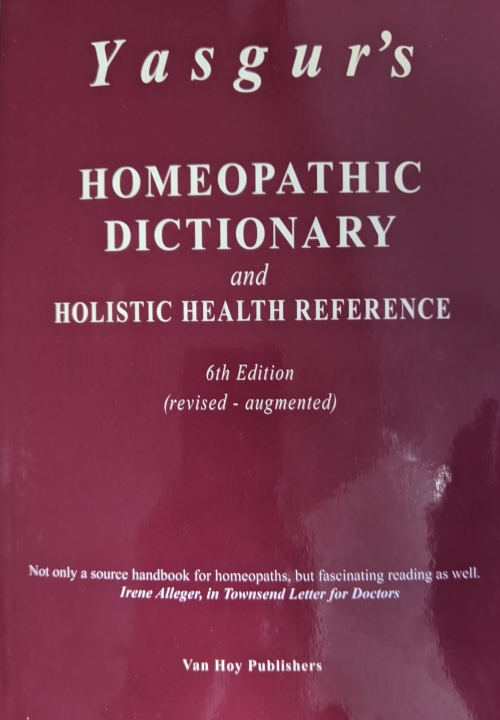
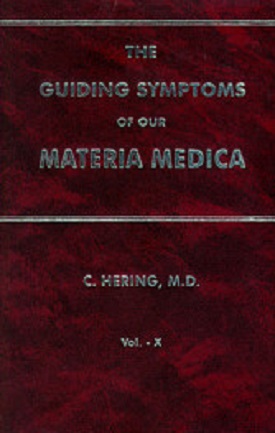
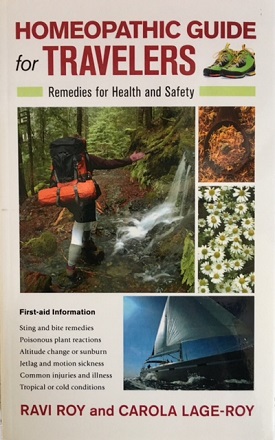
Reviews
There are no reviews yet.